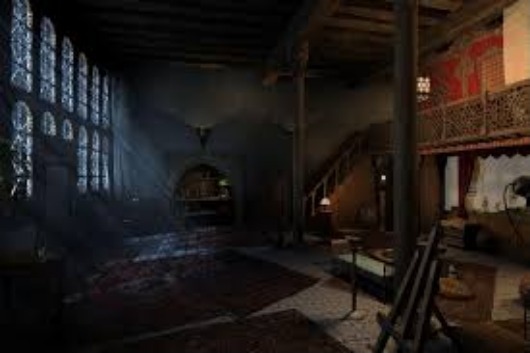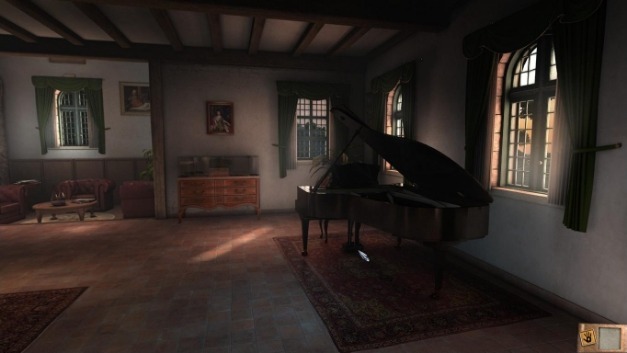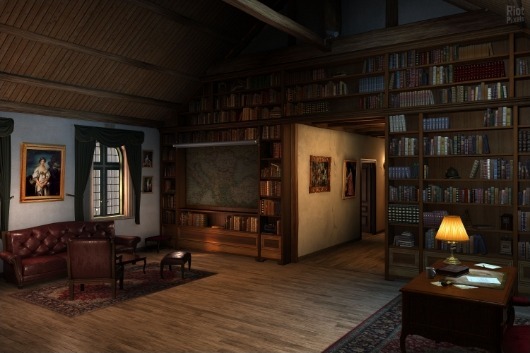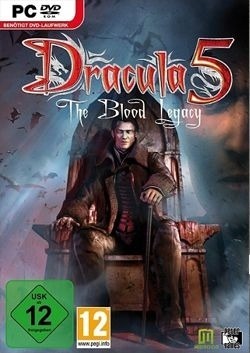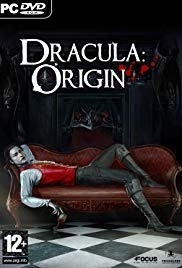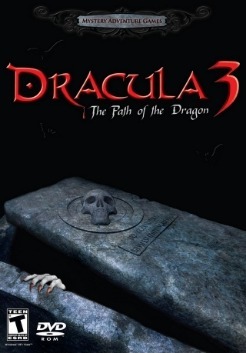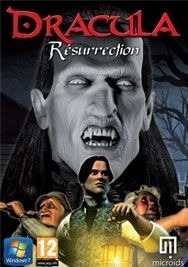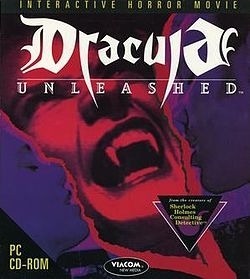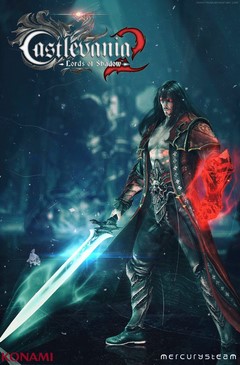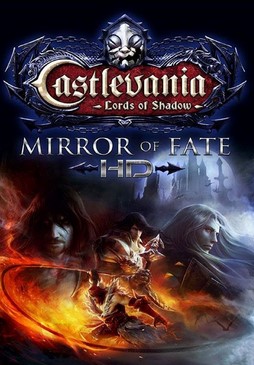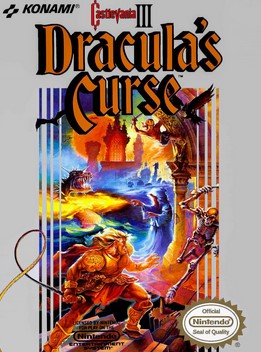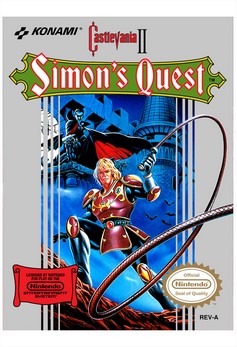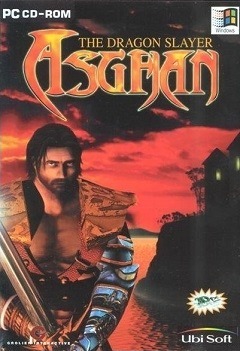Dracula 4: The Shadow of the Dragon is a 2013 point-and-click adventure video game developed by Koalabs Studio for Microsoft Windows, OS X, iOS, and Android. It was published on all systems by Anuman under their Microïds brand. In 2013 the game was released on GOG.com, and in 2014 was bundled with its sequel, Dracula 5: The Blood Legacy. Later in 2014, the bundle was released on Steam.
The game follows 2000's Dracula: Resurrection and Dracula: The Last Sanctuary, and 2008's Dracula 3: The Path of the Dragon. The plot is unrelated to Resurrection and Last Sanctuary, but is the first of a two-part loose sequel to Path of the Dragon, telling the story of Ellen Cross, an art restorer employed at the Metropolitan Museum of Art. When a precious set of fifteen paintings is lost at sea during a storm, Ellen is called to investigate when one of the supposedly lost paintings is auctioned in Budapest. Her investigation soon brings her into contact with Bram Stoker's great-grandson, a mysterious uncatalogued sixteenth painting, and the legacy of Vlad Tepes. The second part of the story, Dracula 5: The Blood Legacy, was released in November 2013.
Shadow of the Dragon received very little attention in the mainstream gaming press, with limited coverage from professional critics, and what reviews it did receive were negative. Critics were especially disparaging about the length of the game, the linearity of the gameplay, and the implementation of the health system.
Gameplay
Shadow of the Dragon is a first-person point-and-click adventure game, with a minimalist HUD; a quick-access item holder, which allows the player to use an item without entering their inventory. The main inventory is accessible by clicking on the hand icon beside the quick-access holder. As well as the inventory, the player has access to a list of objectives, records of all conversations, records of all documents seen and collected, a summary of relevant information acquired, and options for the player to quit their game, or load a previously saved game. The game employs an autosave feature, which is activated at certain predetermined spots, or whenever the player quits to the main menu.
The game uses a basic point-and-click interface to move the player around and manipulate the game world, with player's perspective controlled by the mouse, although the game is also fully touchscreen operable on compatible operating systems. Within each screen, the player is free to look around 360 degrees. As the player moves the cursor around the screen it can change into different styles depending on the situation; neutral cursor (no interaction is possible), an arrow (the player can move in the direction indicated), a mouth (the player can speak to the character over whom the option appears), an eye (an area or object can be examined in more detail), a hand (the player can take the object), a cog (the player must use an inventory item to initiate interaction with the object), a left-right horizontal arrow (the object can be moved left and right), and an up-down vertical arrow (the object can be moved up and down).
A gameplay mechanic not seen in the previous Dracula games is a health system. The player character (Ellen Cross) suffers from a rare blood disorder which must be managed with medication. During the game, Cross' health continually decreases, and if it goes below a certain level, she becomes unable to move or perform tasks. The player has access to various types of medication throughout the game and can experiment with combinations to continually top off her health.
The game can be played in either "Adventure Mode" or "Casual Mode". In Casual Mode, interactive zones are automatically shown on-screen. Also in Casual Mode, after a set period of time elapses, players are given the option to skip puzzles. The game also features a points system and a series of in-game trophies, both of which are inactive if the player is playing in casual mode.
Plot
The game begins with a tsunami engulfing a freighter carrying a priceless collection of fifteen paintings on their way from England to the Metropolitan Museum of Art. The ship is lost, as is the entire collection, along with their owner, Professor Vambery. The game then cuts to a tunnel leading into a columned room full of water, where a dark figure calls to "Ellen", telling her "the shadow is approaching." Ellen Cross, an art restorer who works for the Met, is then awakened in her apartment in New York by a telephone ringing. She answers it, and is told of the loss of the Vambery collection. She is next seen at her doctor's; Ellen suffers from an extremely rare blood disorder, and has just been told the medication which keeps her alive has been discontinued. Her doctor gives her a last supply of medication, and Ellen vows to live life to the full until the end. Several months later, Phillips, the director of the museum tells her one of the lost paintings has possibly surfaced at a private auction in Budapest and dispatches her to investigate if it is authentic.
Upon arriving, she meets Inspector Bizlos Lazlo, and determines the painting is definitely from the Vambery collection. Lazlo tells Ellen it was being sold by a man named Adrian Friedlen, a well-known petty thief. He refused to speak to the police, but, as he talks in his sleep, Lazlo set up a recorder in his cell. Ellen listens to a recording in which Friedlen warns "the master is approaching," looking for his mirror, and also refers to the "Prince of Exile." She hopes to speak to him, but Lazlo finds him dead in his cell. Although it appears as if he died of either natural causes, or possibly committed suicide, his face is contorted in terror, and a moment before he died all the security cameras in the police station stopped working. Lazlo and Ellen also discover Friedlen wrote "He's coming to kill me" on the wall of his cell. In his belongings, Ellen finds an encoded message, which she takes, unbeknownst to Lazlo.
She calls Phillips to tell him the painting is authentic, and he tells her Vambery's assistant has discovered Vambery added an uncatalogued sixteenth painting to the collection, but no one knows what it is. As such, he sends her to Vambery's residence in Whitby to see if she can find out anything about it. Once there, she meets Vambery's assistant, Adam Stoker, Bram Stoker's great-grandson. As Ellen explores the manor, she discovers a secret surveillance room in which she listens to an audio recording where Vambery talks of a portrait by an artist known as Kaneyek. Vambery is greatly disturbed by the portrait, which was handed down to him by his father, but although he fears it, he is unable to destroy it, and so he decides to ship it with the collection for New York without telling anyone. He reasons that putting the painting in a museum on the other side of the world will give him peace, and speculates that "he won't think to look for it there."






